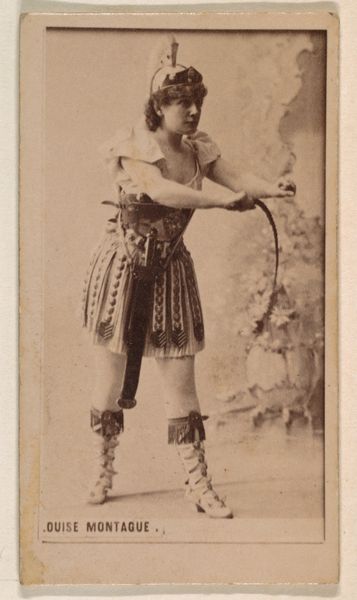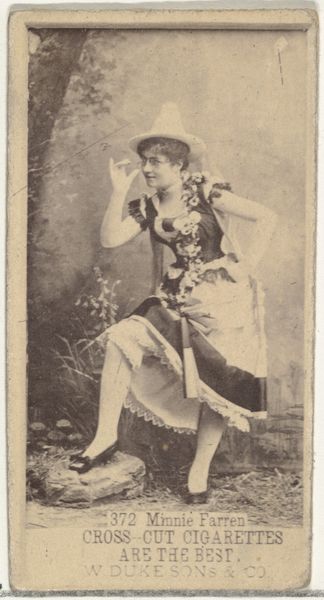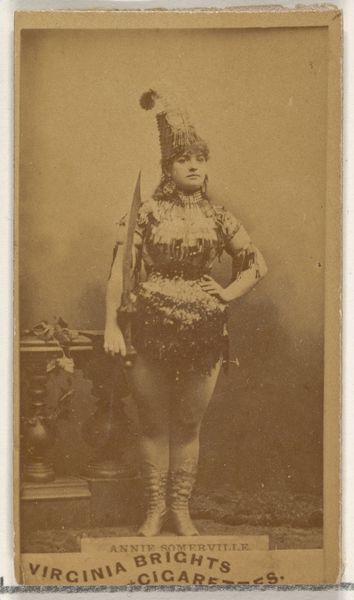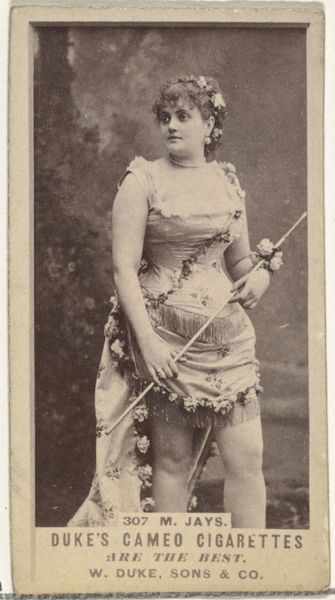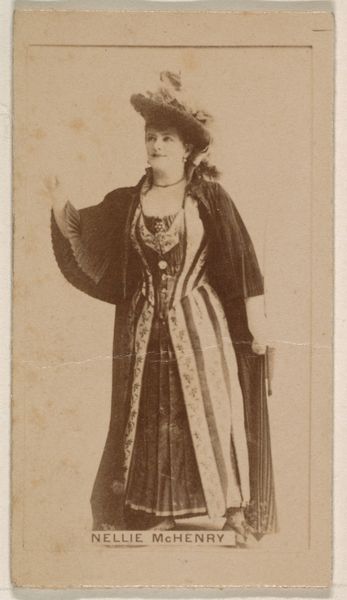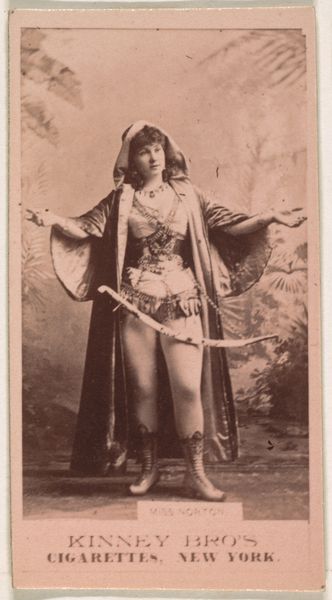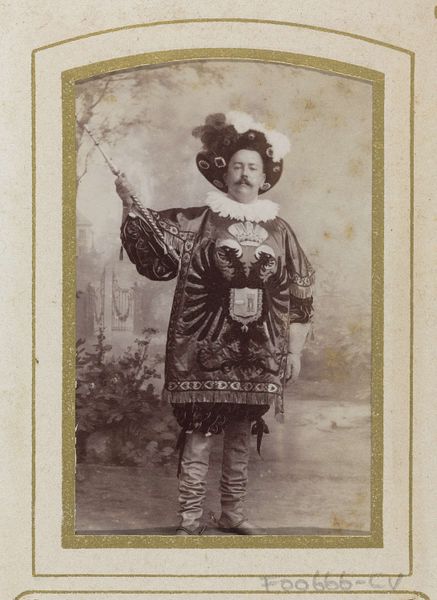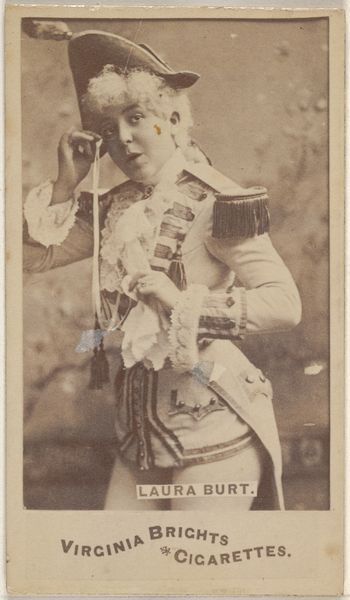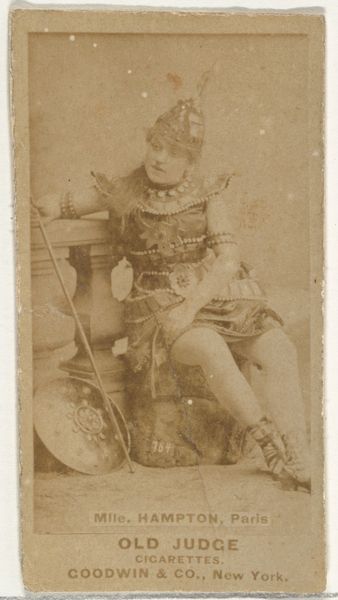
Miss Anna Sutherland as "Queen," from the Actresses series (N245) issued by Kinney Brothers to promote Sweet Caporal Cigarettes 1890
0:00
0:00
print, photography
#
portrait
#
16_19th-century
#
pictorialism
# print
#
photography
#
19th century
#
genre-painting
Dimensions: Sheet: 2 1/2 × 1 7/16 in. (6.4 × 3.7 cm)
Copyright: Public Domain
Editor: So, here we have “Miss Anna Sutherland as ‘Queen’” a print from 1890 by Kinney Brothers. It's a photographic portrait, but the sepia tone and the dramatic pose give it this kind of romantic, theatrical feel. What stands out to you when you look at it? Curator: I immediately see this as a performance of power, heavily mediated by gender and class expectations of the late 19th century. Note how Sutherland, an actress, is costumed not just as "Queen," but in a very specific, arguably fetishized way. Who is this performance for? How does it play into the larger spectacle of celebrity and consumerism fueled by tobacco companies at the time? Editor: That’s interesting! I was mostly focused on the kind of... fairytale quality. I didn’t really consider the commercial aspect. Curator: Exactly. These images weren’t just art; they were advertisements embedded in a rapidly evolving consumer culture. The male gaze is certainly at play. And we need to question: What did it mean to portray women, especially actresses, in such roles and then distribute these images widely? How did it impact broader cultural notions about female empowerment versus objectification? Do you see this 'Queen' as an active figure, or more as a decorative symbol? Editor: Hmm…I guess she looks a bit… static. The sword seems more like a prop than an actual weapon. So you’re saying this is less about female empowerment and more about selling an idea of women? Curator: Precisely. Think of the ways idealized femininity was packaged and sold during this era – and even today. How might we view this image through the lens of feminist theory or critical race studies, especially when we consider the broader historical context of imperialism and the roles of women within it? Editor: Wow, I never thought about it that way. I'm seeing so many different layers now! Curator: That's the power of situating art within its historical and social landscape. It prompts us to confront uncomfortable truths and reassess our assumptions. Editor: Definitely given me a lot to think about! I will look more closely from now.
Comments
No comments
Be the first to comment and join the conversation on the ultimate creative platform.
